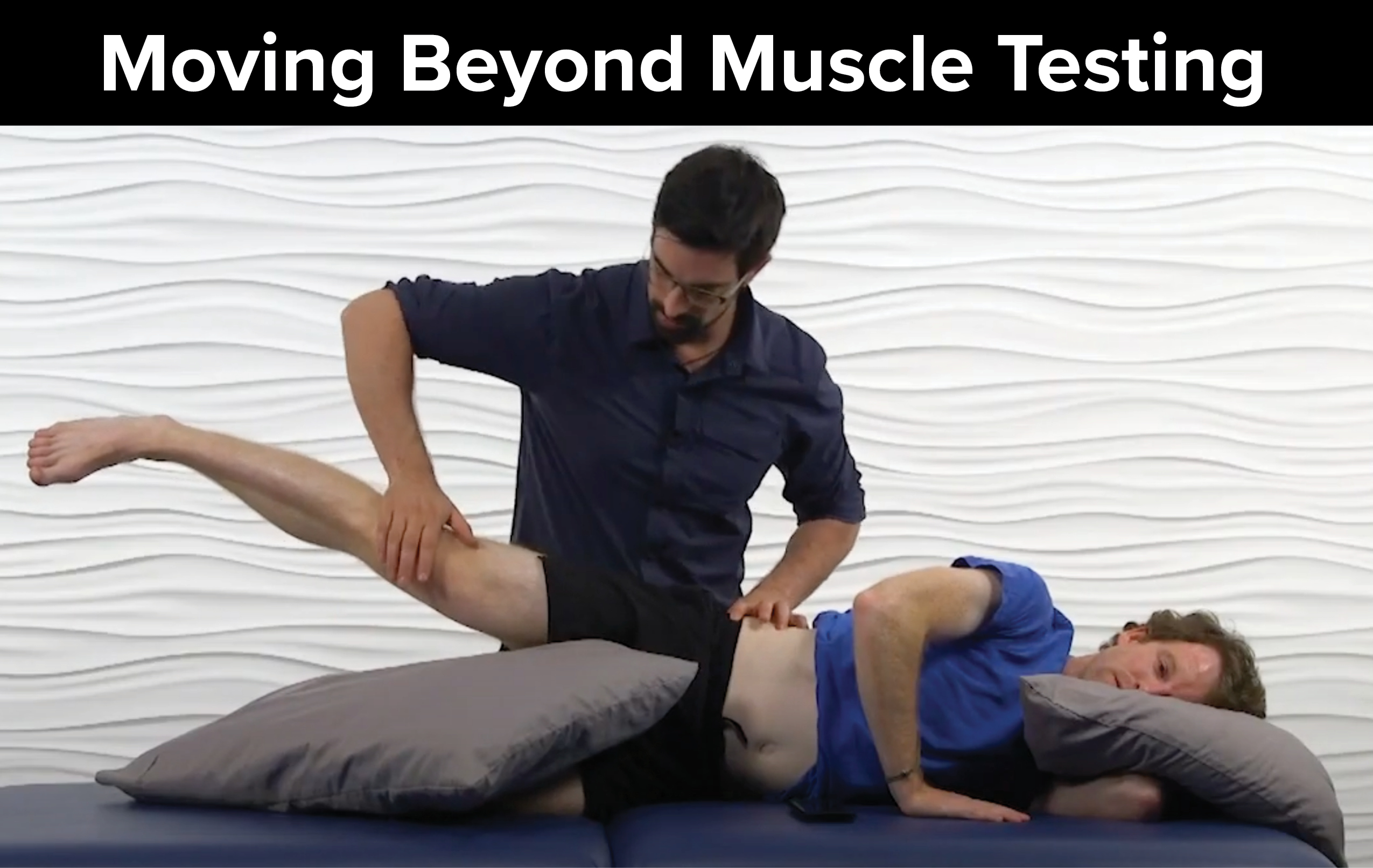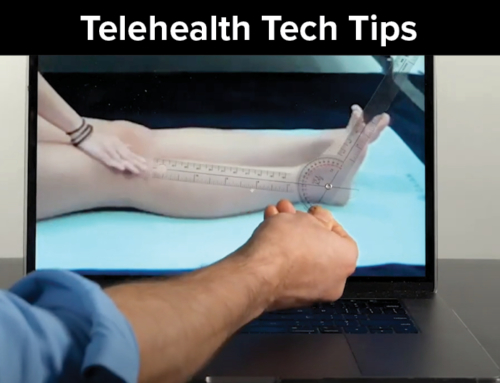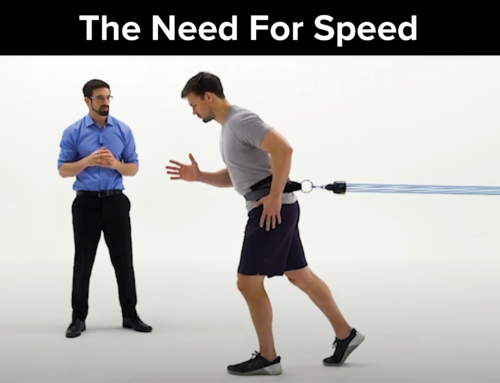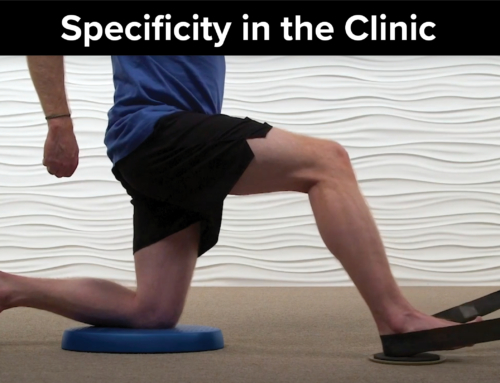As therapists, we use manual muscle tests to assess a patient’s strength on a daily basis. But does the standard manual muscle test (MMT) give us all the information we need to assess patient strength with regards to function and sport? What additional muscle testing strategies can we use in combination with standard muscle testing to establish a more comprehensive picture of a patient’s functional strength? And perhaps most importantly, how can we incorporate this information into the treatment we provide?
What Is Manual Muscle Testing and Why Is It Used?
Manual muscle tests were developed and first used by Wilhelmine Wright and Robert W. Lovett, MD, in the early 1910s. Since then, many individuals such as Arthur Legg, MD; Janet Merrill, PT; and Henry and Florence Kendall have contributed to the development of modern MMT.1
Today’s MMT is based on the testing of muscles that are often in a mid-range position (for two-joint muscles) or at an end-of-range position (for one-joint muscles) while applying manual resistance. Strength assessment is given a numerical score from 0 to 5 to describe the patient’s performance.
MMTs provide practitioners with a way to quantitatively grade a patient’s strength, track improvement, and document changes throughout treatment. But do MMTs truly test strength in relation to function? Are there other factors we should consider when performing MMTs? And how do MMTs relate to function and sport?
MMTs provide helpful information about muscle quality, timing, and compensatory strategies the patient might be using:
- Muscle quality—This can be determined by assessing the force production a patient can generate in combination with the ability to maintain their limb in the appropriate muscle testing position.
- Timing—The clinician can assess proper timing of muscle activation, such as gluteus maximus activation prior to hamstring activation during a hip extension MMT.
- Compensatory strategies—These can be identified during an MMT when, for example, a patient exhibits excessive hip flexor activation while testing the gluteus medius.
These are all useful pieces of information obtained from a standard MMT and may give insight into how the patient utilizes their muscles when demand is placed on them.
Manual Muscle Tests Are Not the Full Picture
MMTs are performed in an open kinetic chain position; however, many functional activities and sports place muscular demands on the lower extremity in a closed kinetic chain position.
We should consider testing lower extremity muscles in a closed kinetic chain position in order to appropriately assess muscle activation while in a functional position, especially if a movement dysfunction is observed during a closed kinetic chain phase activity.2
Additionally, MMTs do not mimic the demands of muscle in function. For example, during walking or running, the gluteus medius activates to stabilize the femur and pelvis for a few seconds and then relaxes. This pattern of short, repetitive activation bursts continues with every step the individual takes; however, standard MMTs are performed with prolonged resistance and not in short, repetitive bursts.
We should consider assessing muscles with speed-of-force testing to adequately assess the timing of muscle activation with regards to function.3
Example 1: Hip Drop Running in Midstance
In the video below, the runner demonstrates a subtle contralateral hip drop while in midstance.[youtube v=”5l2_-FPeaAE”]
One common hypothesis a practitioner might make is that the contralateral hip drop is due to ipsilateral gluteus medius weakness. This practitioner would then perform a standard MMT to assess gluteus medius strength. But unfortunately, this does not test the muscle in a functional running position.
Instead, we should consider testing the gluteus medius in a closed kinetic chain position in order to better mimic the muscular demands on the hip while in this phase of running. But how do you do this?[youtube v=”zgy5SJfDJXY”]
Example 2: Femoral Adduction in Loading
In the video below, the runner demonstrates excessive femoral adduction during the stance phase of running.[youtube v=”LV6RJywQb9E”]
Excessive femoral adduction during stance phases of running or gait could indicate gluteus medius/hip abductor weakness. Once again, the standard examination approach is to perform an MMT with prolonged resistance. However, as discussed earlier, during the activities of walking and running, the demand on the muscles of the hip is in short, repetitive bursts. The hip abductors have to work isometrically for these short bursts of seconds. This pattern of short, repetitive activation bursts continues with every step or stride the individual takes.
How can we test whether the gluteus medius can withstand and stabilize the femur and pelvis with repetitive, short bursts of force?
The answer is to test for speed-of-force generation by placing the patient into the standard MMT position and applying quick, strong impulses at the appropriate cadence for the activity being tested (walking versus running, for example). Outcomes can be objectified by rating as normal, subtle, or obvious.[youtube v=”zW3s9W8HD7Y”]
To advance one step further, you could combine both the closed kinetic chain testing with speed-of-force generation testing!
Why Aren’t More Therapists Using These Testing Methods?
A large obstacle toward incorporating closed kinetic chain and speed-of-force muscle testing into practice can be that the majority of practitioners are simply unaware of these various testing methods.
In addition, current trends in healthcare have resulted in reduced time spent with patients, making it more challenging to put newly learned testing methods into practice. However, the above demonstrated skills can easily be incorporated into any evaluation in which you would normally perform an MMT and functional movement assessment. These skills are simple and do not require excessive amounts of time to complete, yet they are crucial to developing a comprehensive treatment plan for the patient.
How Does This New Information Relate to Training?
Patients who perform activities or sports in closed kinetic chain positions should be trained in a closed kinetic chain exercise that mimics the activity they are working to improve. For example, a runner with contralateral hip drop could be trained to keep a stable pelvis while performing single leg squats, step downs, and eventually hops. See below for examples of these from the MedBridge Home Exercise Program library.
[youtube v=”dLtzuzDWX30″]
[youtube v=”HC8e4rkx5yI”]
[youtube v=”fH4wvlsqvf8″]
All of these movements are transferable to running and place the individual in a position that mimics the various phases of running.
It’s also important to add the speed-of-force component to treatment. For example, a runner with excessive femoral adduction could use the cadence of a metronome for external cueing while performing an exercise such as a single leg squat. The external auditory cue from the metronome can allow the runner to gradually work their way up to full speed running cadence while training appropriate muscle activation for their sport. Working on muscle activation and timing in repeated short bursts can train muscles to activate in a more functional relationship for sport.
[youtube v=”G7w7I90k52s”]
About the Authors
About Jared Vagy, PT, DPT, OCS, CSCS

Dr. Vagy received his Doctorate in Physical Therapy (DPT) from the University of Southern California (USC). He has completed a one-year residency in orthopedics and a one-year fellowship in movement science. Dr. Vagy is a Clinical Assistant Professor of Physical Therapy in the DPT program at USC. He has published three books and numerous articles on injury prevention. Dr. Vagy delivers lectures and seminars internationally on the topic of The Movement System. He is an orthopedic clinical specialist and a certified strength and conditioning specialist.
Dr. Vagy has served as a physical therapist in China for the Chinese National Track and Field Team, worked with USA Track and Field at the Olympic Team Trials, completed a rotation at the US Olympic Training Center working primarily with USA Men’s gymnastics, and provided medical care at international events such as the International Weightlifting Federation World Championships. He has rehabilitated several world champions, gold medalists, and Olympic athletes. His assessments and treatments are rooted deeply in an understanding of The Movement System.
About Tatiana Brovko Gray PT, DPT, OCS

References
- Hislop, H. J. & Montgomery, J. (2007). Daniels and Worthingham’s Muscle Testing: Techniques of Manual Examination, 8th Ed. Philadelphia, PA: WB Saunders.
- Cochrane, D. J. & Harnett, M. C. (2015). Muscle activation patter and onset times during a semi-orthostatic, unilateral closed-kinetic hip extension exercise in adolescent males. Physiotherapy Theory and Practice, 31(5): 367–371.
- Janusevicius, D., Snieckus, A., Skurvydas, A., Silinskas, V., Trinkunas, E., Cadefau, J. A., & Kamandulis, S. (2017). Effects of high velocity elastic band versus heavy resistance training on hamstring strength, activation, and sprint running performance. Journal of Sports Science & Medicine, 16(2): 239–246.
- The original article and associated course can be found on the Medbridge blog page at this link: Click here







Leave A Comment